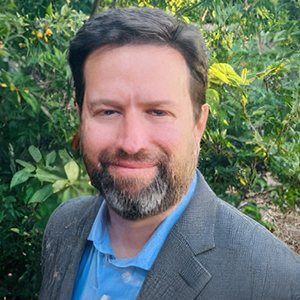Kevin Bender is professor of neurology at the University of California, San Francisco. His lab focuses on understanding how the brain encodes information at the synaptic, cellular and network level. Work primarily revolves around understanding how ion channels and modulation of ion channels contribute to these processes in health and in neurodevelopmental and neuropsychiatric conditions. This includes studies related to neurodevelopmental channelopathies, for which he is grateful to be able to work with close colleagues and partners from academia, industry and patient advocacy groups.

Kevin Bender
Professor of neurology
University of California, San Francisco
From this contributor

Should I work with these people? A guide to collaboration
Selected articles
- “Impaired cerebellar plasticity hypersensitizes sensory reflexes in SCN2A-associated ASD” | Neuron
- “Physical and functional convergence of the autism risk genes Scn2a and Ank2 in neocortical pyramidal cell dendrites” | Neuron
- “Arrestin-3 Agonism at Dopamine D3 Receptors Defines a Subclass of Second-Generation Antipsychotics That Promotes Drug Tolerance” | Biological Psychiatry
- “The Autism-Associated Gene Scn2a Contributes to Dendritic Excitability and Synaptic Function in the Prefrontal Cortex” | Neuron
- “Periadolescent Maturation of GABAergic Hyperpolarization at the Axon Initial Segment” | Cell Reports
Explore more from The Transmitter
The Transmitter’s most-read neuroscience book excerpts of 2025
Books by Nachum Ulanovsky, Nicole Rust, and Andrew Iwaniuk and Georg Striedter made the list of some of the year's most engaging neuroscience titles.

The Transmitter’s most-read neuroscience book excerpts of 2025
Books by Nachum Ulanovsky, Nicole Rust, and Andrew Iwaniuk and Georg Striedter made the list of some of the year's most engaging neuroscience titles.
Neuroscience’s leaders, legacies and rising stars of 2025
Here are seven stories from the past year about some of the field’s most engaging figures.

Neuroscience’s leaders, legacies and rising stars of 2025
Here are seven stories from the past year about some of the field’s most engaging figures.
The Transmitter’s top news articles of 2025
Check out some of our most-read stories, covering neuroscience funding and policy changes in the United States, and methodological issues in high-profile neuroscience papers.

The Transmitter’s top news articles of 2025
Check out some of our most-read stories, covering neuroscience funding and policy changes in the United States, and methodological issues in high-profile neuroscience papers.